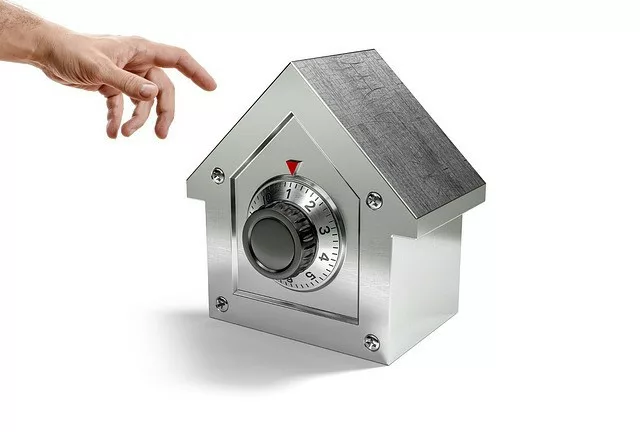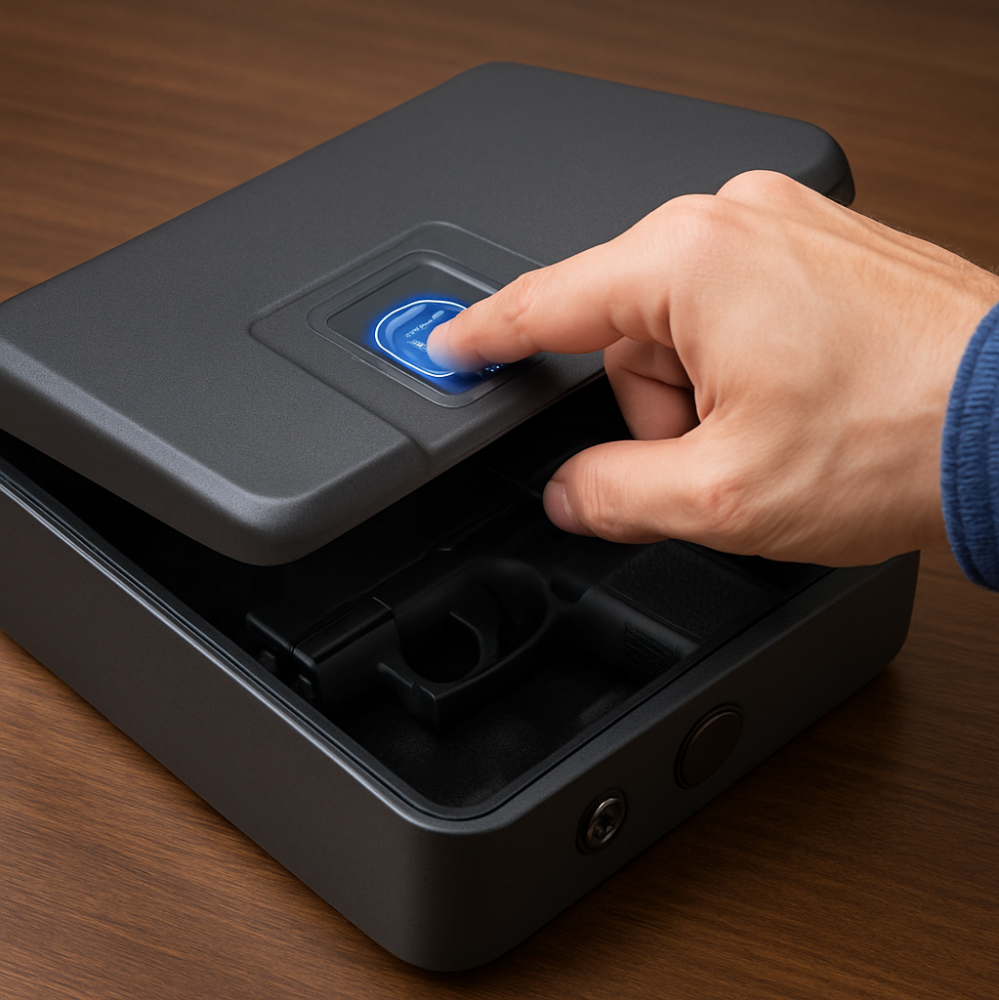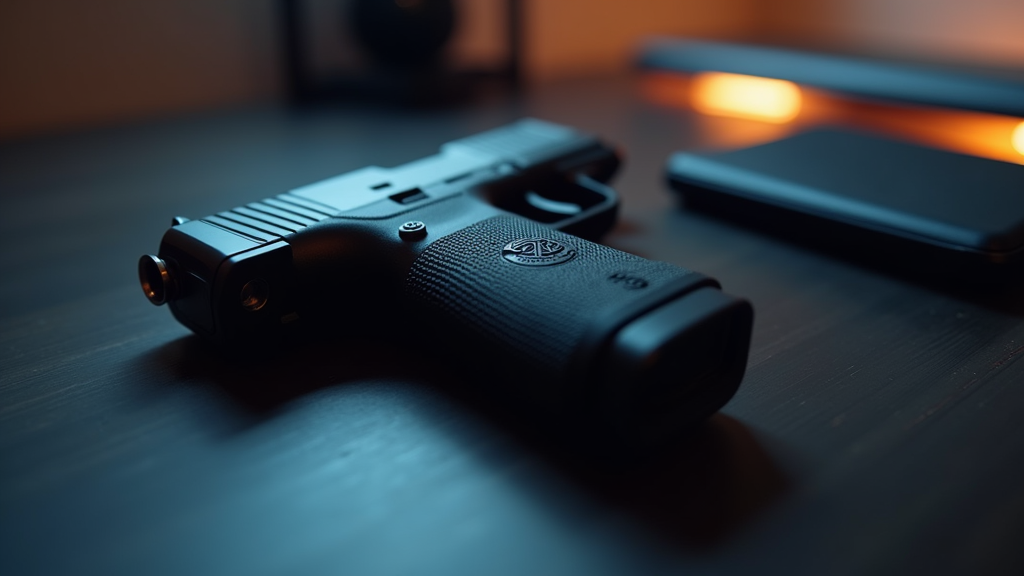How to Hide a Safe
In a world where security concerns continue to mount, the need to protect our valuable possessions and sensitive information has become paramount. Safes have long served as a reliable solution for safeguarding our valuables, offering a sense of security and peace of mind. However, the challenge lies in concealing these safes effectively, preventing potential intruders from detecting their presence. This predicament has led individuals to explore a fascinating concept—hiding a safe in plain sight. This includes gun safes.
The notion of hiding a safe in plain sight may initially seem counter intuitive. After all, shouldn’t we strive to keep our valuables hidden away from prying eyes? However, there are instances when keeping a safe visible but inconspicuous can be an ingenious strategy. Whether it’s for added security in a residential setting, protecting sensitive documents in a corporate environment, or simply to keep personal belongings discreetly stored, hiding a safe in plain sight presents a compelling option for those seeking to fortify their defenses.
The beauty of this approach lies in the element of surprise. Potential intruders are often drawn to obvious hiding spots, such as closets, under beds, or behind paintings. By strategically placing a safe in a location that is both unsuspecting and blends seamlessly with its surroundings, you can ensure that your valuable possessions remain well-guarded from prying eyes, while burglars remain oblivious to their existence.
This article aims to shed light on the concept of hiding safes in plain sight, providing practical tips and creative ideas to help you create an effective camouflage for your most cherished belongings. From innovative concealment techniques to integrating safes into everyday objects and surroundings, we will explore the art of disguise, enabling you to outsmart potential threats while maintaining easy access to your valuables.
Remember, security is not just about the strength of your safe—it’s also about how discreetly you can protect what lies within. So, join us on this enlightening journey as we delve into the realm of hidden safes, unlocking the secrets to safeguarding your valuables unnoticed, right in plain sight.
Types of Safes that Can be Hidden
When it comes to hiding a normal safe or a gun safe in plain sight, there are various types of safes that offer effective concealment while seamlessly blending into their surroundings. Let’s explore three popular options: wall safes, floor safes, and furniture safes.
Wall Safes

Wall safes are designed to be installed within the walls of a building, offering discreet and space-saving storage. They are typically recessed into the wall, hidden behind a painting, mirror, or a piece of furniture. By utilizing the existing structure of your home or office, wall safes remain virtually invisible to the untrained eye. Their flat profile allows for easy concealment, making them an ideal choice for those seeking to hide their safe without sacrificing valuable floor space.
Floor Safes
Floor safes are installed directly into the floor, offering exceptional security while remaining hidden from view. These safes are often placed in inconspicuous locations, such as beneath a carpet, rug, or tile flooring. Floor safes provide a substantial level of protection, as their heavy construction and secure installation make them extremely difficult for intruders to access. They are particularly popular in commercial settings, where the floor can provide an additional layer of concealment for larger or more valuable items.
Furniture Safes

Furniture safes combine functionality and secrecy, as they are cleverly designed to resemble everyday pieces of furniture. These safes can take the form of a nightstand, bookshelf, file cabinet, or even a wall clock. Furniture safes often feature hidden compartments or drawers that securely house your valuables while maintaining the appearance and purpose of their respective furniture items. This type of safe offers a dual advantage: not only do they provide discreet storage, but they also blend seamlessly with your existing decor, adding an extra layer of camouflage.
Each of these safes has its own unique advantages and considerations. Wall safes and floor safes are more permanent fixtures that require professional installation, while furniture safes offer flexibility and can be easily moved or integrated into different living or working spaces. The choice ultimately depends on your specific needs, the amount and type of items you wish to conceal, and the level of security you require.
It is worth noting that regardless of the type of safe you choose, ensuring its durability, resistance to tampering, and compatibility with your desired hiding spot is crucial. Investing in a reputable and high-quality safe that meets your security requirements is essential to maintaining the effectiveness of your hidden safe.
By selecting the right type of safe and strategically integrating it into your environment, you can create a hidden stronghold for your valuables, confounding potential intruders while maintaining accessibility and convenience for yourself.
Creative Ways to Hide a Safe
Choosing the right location to hide your safe is crucial to maintaining its effectiveness. Here are some tips to help you select a suitable and secure hiding spot:
- Avoid Obvious Areas: Steer clear of commonly searched areas such as master bedrooms, closets, and under mattresses. Intruders often target these locations first. Instead, think outside the box and consider less predictable spots within your home or office.
- Blend with Surroundings: Look for places where the safe can blend seamlessly with its surroundings. Consider areas where there are existing objects, furniture, or fixtures that can provide cover or camouflage. This could include behind or inside furniture, inside built-in cabinets, or within the wall structure.
- Concealment Methods: Use clever concealment methods to hide the safe further. For example, you can place it behind a false wall panel, inside a hidden compartment within a piece of furniture, or behind a functional item like a painting or mirror. The key is to make the hiding spot appear inconspicuous and indistinguishable from its surroundings.
- Access Convenience: While secrecy is crucial, it’s equally important to ensure easy access to your safe. Consider the frequency with which you’ll need to access its contents and choose a location that allows for convenient retrieval. Avoid spots that require excessive moving or dismantling of objects, as this can draw attention or become inconvenient in day-to-day use.
- Structural Integrity: Ensure the location you choose can support the weight and size of the safe. If you opt for a wall or floor safe, make sure the surrounding structure is sturdy enough to securely accommodate the safe’s installation without compromising its integrity.
- Limited Visibility: Choose a location that is not easily visible to outsiders, including guests, workers, or service personnel who may have access to your premises. Avoid spots that can be easily spotted through windows or doorways. It’s important to maintain the element of surprise and minimize the chance of someone accidentally discovering your hidden safe.
- Security Layers: Consider integrating additional security layers around the hiding spot. For instance, you can install motion sensors, security cameras, or alarm systems to further fortify the area and deter potential intruders.
Remember, the key to successfully hiding a safe in plain sight is to think creatively and consider unconventional locations that remain inconspicuous and secure. Regularly assess the effectiveness of your chosen hiding spot, and make adjustments if needed to maintain the element of surprise and enhance the security of your valuable possessions.
Hiding a safe in plain sight often involves employing creative techniques to camouflage or disguise it as another object. Here are some imaginative ways to conceal your safe:
- Bookshelf Safe: Transform a section of your bookshelf into a hidden safe compartment. By hollowing out a few books or using specially designed book safes, you can create a discreet storage space for your valuables. To enhance the effect, mix in other real books to maintain the illusion of an ordinary bookshelf.
- Appliance Safes: Consider converting household appliances into hidden safes. For example, you can modify a common kitchen appliance like a microwave or toaster to have a secret compartment inside. These appliances can be strategically placed in your kitchen or pantry, adding an extra layer of disguise.
- False Vent or Outlet Safe: Install a fake air vent or electrical outlet that conceals a hidden safe compartment. These types of safes can be seamlessly integrated into walls or ceilings and are excellent for concealing smaller valuables or important documents.
- Wall Art Safe: Choose a painting or wall art with a hidden compartment behind it. The artwork can be hinged to allow easy access to the safe, while the front remains aesthetically pleasing. This method combines functionality with an artistic touch, creating a visually appealing hiding spot.
- Furniture with Secret Compartments: Invest in furniture that features hidden compartments designed specifically for concealing safes. Examples include coffee tables, ottomans, or nightstands with concealed drawers or compartments. These pieces of furniture not only provide practical storage solutions but also blend seamlessly with your decor.
- Decoy Safes: Utilize decoy safes to divert attention from your actual safe. Decoy safes mimic common objects like soda cans, cleaning product containers, or books. They can be placed in plain sight, while your real safe remains hidden in a less conspicuous location.
- Wall and Floor Camouflage: Use clever wall or floor camouflage to disguise your safe. This can include mirrors, wall panels, or tiles that are designed to hide the presence of a safe. These camouflage options allow your safe to seamlessly blend into its surroundings while remaining discreet.

Remember, the effectiveness of these creative hiding methods relies on maintaining the illusion and ensuring easy access to your safe. Regularly assess the concealment method and make necessary adjustments to maintain its secrecy.
While creative hiding techniques can be effective, it’s essential to strike a balance between camouflage and accessibility. Ensure that you can easily retrieve your valuables when needed without drawing unwanted attention.
Tips for Securing a Hidden Safe
Securing your hidden safe is crucial to ensuring its effectiveness. Here are some tips for securely fastening your safe once it is concealed:
- Anchor to Structure: If your hidden safe is a wall safe or floor safe, anchor it securely to the surrounding structure. Use bolts, screws, or other appropriate fasteners to attach the safe firmly to the wall or floor, making it extremely difficult for unauthorized individuals to remove or tamper with it.
- Reinforce with Steel Plates: Consider reinforcing the area around the safe with steel plates or additional layers of metal. This can provide added protection and prevent unauthorized access by making it challenging to breach the safe’s enclosure.
- Concealed Fasteners: When securing the safe, opt for concealed fasteners whenever possible. This means using bolts, screws, or anchors that are not visible or easily accessible to potential intruders. Concealed fasteners make it harder for someone to identify and remove the safe from its hiding spot.
- Choose High-Quality Fasteners: Select high-quality, tamper-resistant fasteners specifically designed for securing safes. Look for heavy-duty bolts or screws that offer resistance against drilling, prying, or other forms of tampering.
- Professional Installation: If you are not confident in your ability to securely fasten the safe yourself, consider hiring a professional locksmith or safe technician to handle the installation. They have the expertise and experience to ensure that the safe is properly anchored and secured in its hiding spot.
- Surrounding Reinforcements: Evaluate the surroundings of the hidden safe for additional reinforcement. For example, if the safe is concealed behind a wall panel or furniture, reinforce the panel or the structure holding the furniture to make it more resistant to tampering.
- Alarm Systems: Consider integrating an alarm system that is connected to your hidden safe. This can include motion sensors or contact sensors that trigger an alert if the safe is tampered with or moved. An alarm system adds an extra layer of security and acts as a deterrent to potential intruders.
Remember, no security measure is foolproof, but taking these precautions can significantly enhance the security of your hidden safe. Regularly inspect the fastenings and security measures to ensure they remain intact and effective. By combining careful concealment with robust securing techniques, you can maximize the protection of your valuable possessions.
Conclusion
Securing our valuable possessions and sensitive information is a priority in an increasingly uncertain world. Hiding a safe in plain sight offers a clever solution to safeguarding our valuables while keeping potential intruders oblivious to their presence. Throughout this article, we explored the concept of concealing safes in various ways, including wall safes, floor safes, and furniture safes.
By strategically selecting a location that is inconspicuous and not easily accessible, we can maintain the element of surprise and protect our belongings effectively. Creative techniques such as camouflage, disguising safes as everyday objects, and utilizing hidden compartments within furniture or walls allow us to outsmart potential threats while maintaining easy access to our valuables.
Securing the hidden safe is equally important. Anchoring it firmly to the surrounding structure, using concealed and high-quality fasteners, and considering additional reinforcements help fortify the protective measures. Integration with alarm systems adds an extra layer of security and serves as a deterrent.
Ultimately, the importance of keeping valuables secure cannot be overstated. Whether it’s protecting sentimental heirlooms, important documents, or valuable assets, the peace of mind that comes from knowing our possessions are well-protected is invaluable. By implementing the techniques and tips discussed in this article, we can take proactive steps to safeguard our most cherished belongings.
Remember, security is a continuous endeavor. Regularly assess the effectiveness of your hiding spot, security measures, and fastenings. Stay vigilant and adaptable, ensuring that your valuables remain concealed and secure. By doing so, you can confidently navigate a world where peace of mind and the protection of our valuable possessions go hand in hand.
FAQ
How do you hide valuables in plain sight?
You can hide valuables in plain sight by using diversion safes or decoy objects that resemble everyday items. Examples include hollowed-out books, fake electrical outlets, or disguised containers, providing inconspicuous storage for your belongings.
How can I disguise my safe?
You can disguise your safe by placing it inside furniture, such as cabinets or closets, to make it less noticeable. Alternatively, using a diversion safe that resembles common household objects can also be an effective way to disguise it.
Should a safe be visible?
Ideally, a safe should not be easily visible to potential intruders. Concealing it in inconspicuous locations like closets, hidden rooms, or behind furniture can enhance security by reducing the chance of burglars targeting it directly.
How do I hide a safe behind a picture?
To hide a safe behind a picture, mount the safe on a wall, then hang a picture or artwork over it. Ensure the picture securely covers the safe and use proper mounting hardware to support both the picture and the safe’s weight.
How can I hide my small safe at home?
You can hide a small safe at home by placing it in less obvious locations like under the bed, inside a cabinet, or behind furniture. Consider using a diversion safe that blends into the environment or opting for built-in concealed safes.
Where is the best place to keep a safe at home?
The best place to keep a safe at home is in a secure, discreet, and easily accessible location. Popular options include closets, concealed rooms, inside furniture, or bolted to a concrete floor within a locked room.
What is a diversion safe?
A diversion safe is a type of safe designed to look like ordinary objects, such as books, cans, or household items. These safes offer a covert way to store valuables by blending seamlessly into the surroundings, fooling potential intruders.
What is the alternative to bolting a safe to the floor?
If you cannot bolt a safe to the floor, you can secure it by using heavy-duty security cables or chains to anchor the safe to a fixed object like a wall or sturdy furniture. These alternatives provide an extra layer of security and prevent thieves from easily removing the safe.




Leave a Reply